Panasonic manufactures two converter lenses, one wide angle and the other telephoto, for modifying the focal length of the on-camera lens. However, both of them are way too expensive to attract average shooters. Since other converters made by Canon, Minolta, Nikon and Olympus can also deliver excellent images, this page will not discuss Panasonic converters. If you are interested, the Panasonic 1.5X teleconverter DMW-LTZ10 can be found here for $499.95 and the 0.8X wide angle converter DMW-LWZ10 can be found here for $349.95.
All converters screw on to an adapter, which, in turn, screws on to the camera body. Each lens has a lens power (i.e., 0.2x, 0.8x and 1.5x). When a converter lens is used with the on-camera lens, the combined focal length is the product of the lens power and the focal length of the on-camera lens. Recall that the on-camera lens has focal length in the range of 35mm and 420mm (35mm equivalent). If a 0.8X wide angle converter is used, the combined focal length is in the range of 28mm (=35mm×0.8) and 336mm (=420mm×0.8).
These converter lenses are of type afocal. Parallel light rays entering an afocal lens are also parallel when they exit; however, the diameter of the exiting parallel light rays may be different from the diameter of the entering light rays. Thus, an afocal lens does not have focal length, or, its focal point is at infinity. As a result, afocal lens are only used for modifying focal lengths and other optical characteristics, and must be used with other prime lenses. This means afocal lenses are not supposed to be used alone.
Because converters are attached to the on-camera lens, creating a combined lens of modified focal length, the optical problems of the lens converter will be magnified by the on-camera lens. These include lens flare, ghost image, field curvature, aberration and so on.
Note that these converter lenses cannot be mounted on to the camera directly. You will need appropriate adapter tubes. Click here for the details.
The available converter lenses have three types: fisheye, wide angle and telephoto. Normally, fisheye converter lenses are of the 0.2X type; good wide angle converter lenses are 0.7X or 0.8X, although 0.6X and some 0.25X and 0.4X semi-fisheye lenses (i.e., ultra wide angle lenses that do not correct linear distortion) are also available; and telephoto converters of 1.45X, 1.5X, 1.7X and 2.2X. The following table shows the effective focal length when a particular converter lens is used.
| Fisheye 0.2X | Wide Angle 0.7X | Wide Angle 0.8X | Telephoto 1.4X | Telephoto 1.5X | Telephoto 1.7X | Telephoto 2.2X |
| 7mm-84mm | 24.5mm-294mm | 28mm-336mm | 49mm-588mm | 52.5mm-630mm | 59.5mm-714mm | 77mm-924mm |
This table may give you an illusion that with converter lenses you will have a focal length coverage from 7mm to 924mm. In reality, it is not the case for three major reasons. First, at the telephoto end, it is very likely that only the longer focal length is available. In other words, with a 1.7X telephoto converter, although theoretically you will have a focal range of 59.5mm (= 35mm×1.7) and 714mm (= 420mm×1.7), in practice the available focal length without vignetting is perhaps between 350mm to 714mm, and, as a result, the focal range of 59.5mm and 350mm is not usable. Second, any glass added to a lens has the potential to reduce the image quality of the lens. Hence, for better image quality, if a focal length is available with the on-camera lens, use the on-camera lens rather than a converter lens. For example, with a 1.7X teleconverter lens, one might have a usable focal length range of 350mm to 714mm. If you need to use a 400mm focal length, use the on-camera lens rather than the converter. Click here for more details. Third, converters, especially telephoto converters, may not be as effective as the on-camera lens in closer shooting distance. Front mounting telephoto converters have the tendency to increase the minimum focusing distance. In other words, if the on-camera lens can focus at 2 meters, the camera plus a telephoto converter combo may only be able to focus at 3 or 4 meters. As a result, if a subject can be shot at about the minimum focusing distance of the on-camera lens, use the on-camera lens rather than a telephoto. Otherwise, you will be forced to move away from the subject and, at the same time, reduce the size of the subject in the image. So, at close distance, a telephoto converter may not be very effective.
The next few images were all taken at the same position with different focal lengths. The first three were taken with a fisheye, a 0.7X wide angle and a 0.8X wide angle, respectively; the next 12 were taken with the on-camera lens at 1X, 2X, ..., 12X; and the last three were taken with 1.4X, 1.5X and 1.7X teleconverter lenses. Approximate focal length of each image is also shown. From these images, it is not difficult to see the coverage of each focal length, and the power of the on-camera lens.
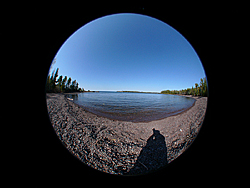
|
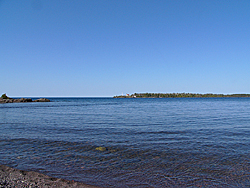
|
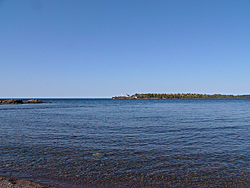
|
| 7mm Fisheye | 24.5mm | 28mm |
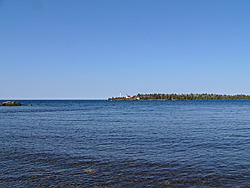
|
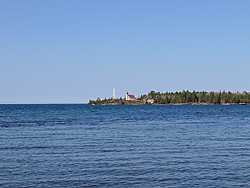
|
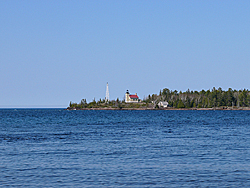
|
| 35mm (1X) | 70mm (2X) | 105mm (3X) |
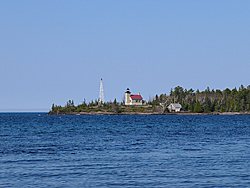
|
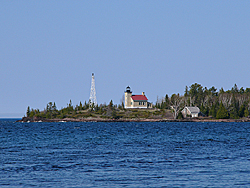
|
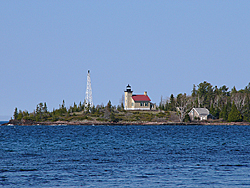
|
| 140mm (4X) | 175mm (5X) | 210mm (6X) |
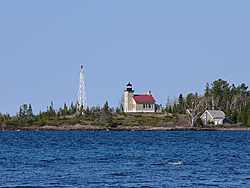
|
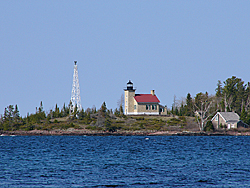
|
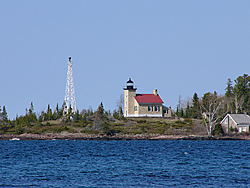
|
| 245mm (7X) | 280mm (8X) | 315mm (9X) |
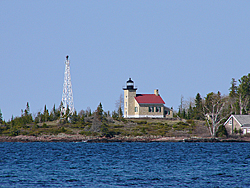
|
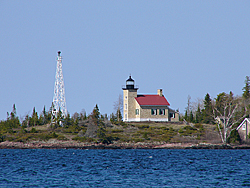
|
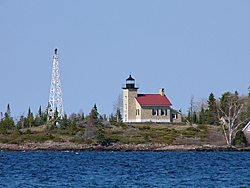
|
| 350mm (10X) | 385mm (11X) | 420mm (12X) |
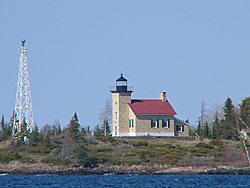
|
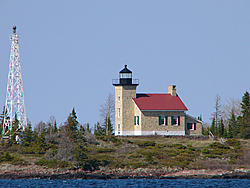
|
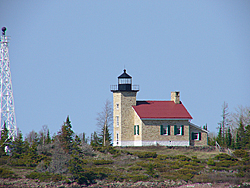
|
| 588mm (1.4X Tele) | 630mm (1.5X Tele) | 714mm (1.7X Tele) |
| Click on the image to see a larger one |
A possible problem when using a converter lens is that the converter may partially block the internal flash coverage, especially with larger diameter converter lenses. Thus, the converter lens may cast a shadow in the lower portion of the captured image when the internal flash fires.